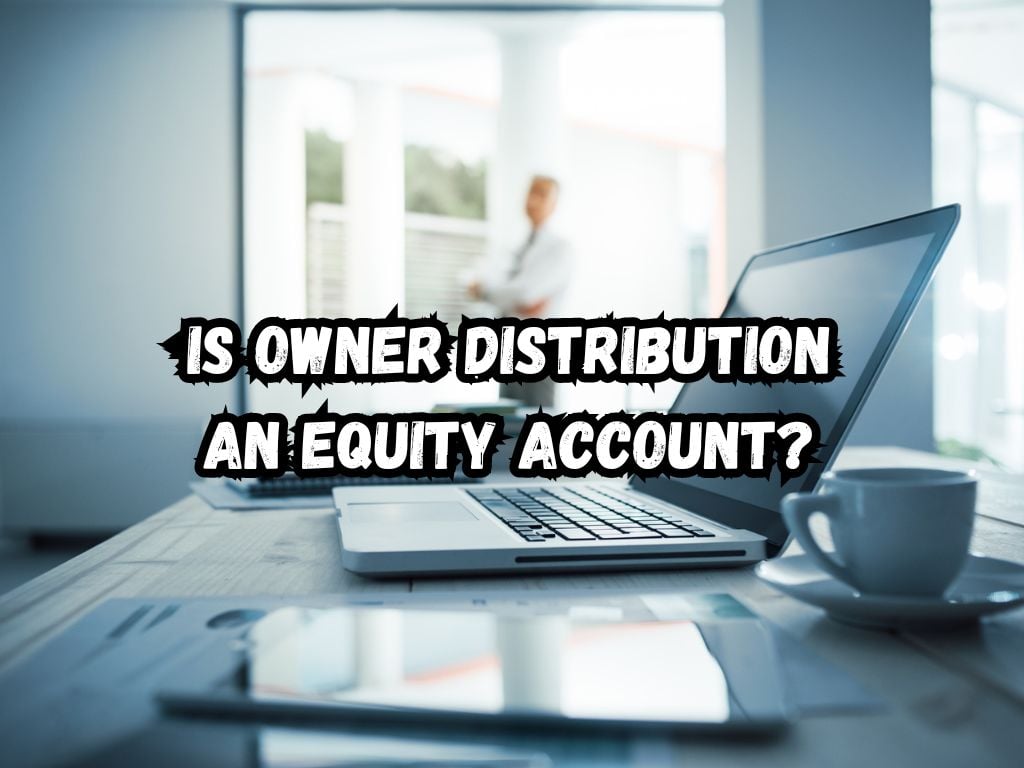Navigating the complex landscape of accounting principles requires a deep understanding of various components that make up the financial structure of a business.
Among these, owner distributions and equity accounts hold significant importance. So, is owner distribution an equity account?
This article delves into the intricacies of owner distributions, exploring their classification within equity accounts and their impact on a business’s financial health.
Is Owner Distribution an Equity Account?
At its core, owner distribution directly ties into equity accounts. Precisely, it falls under owner’s draws or distributions, affecting the equity landscape of a business.
This relationship underscores the fact that when an owner withdraws assets from the business, the overall equity is diminished.
Such transactions highlight the fluid nature of a business’s equity account, where increases and decreases are regular occurrences driven by business operations and owner decisions.

What Is Owner Distribution?
Owner distribution stands as a pivotal concept in accounting, particularly within businesses where ownership plays a direct role in financial operations.
This practice involves the withdrawal of assets from the business by the owner for personal use. These assets can range from cash to any other form of tangible or intangible asset owned by the business.
The occurrence of owner distributions is not limited to a specific type of business structure but is common across various forms, including sole proprietorships, partnerships, and limited liability companies (LLCs).
How Owner Distributions Operate Across Business Structures
The mechanism of owner distributions varies across different business structures. In a sole proprietorship, distributions are straightforward, taking the form of direct withdrawals without the need for formalities.
Partnerships allow distributions according to the partnership agreement, with profits and losses shared among partners. LLCs offer flexibility, with distributions guided by the company’s operating agreement.
Despite these variations, the underlying principle remains: assets withdrawn reduce the equity of the business owner.
What Are Equity Accounts?
To grasp the concept of owner distributions fully, one must understand equity accounts. These accounts represent the owner’s claim or interest in the company. Essentially, they reflect the net assets available to the owners after satisfying all liabilities.
Equity accounts have various forms, including common stock, preferred stock, retained earnings, owner’s capital, and owner’s draws or distributions.
Each type serves a unique purpose within the financial ecosystem of a business, highlighting the multifaceted nature of equity.
The Spectrum of Equity Accounts
Delving into the types of equity accounts further illustrates the diverse nature of how a business can structure its financial foundation.
Common and preferred stocks signal ownership interests in corporations, featuring both similarities and distinctions in rights and dividends.
Retained earnings denote the portion of net earnings not distributed as dividends but retained for reinvestment or debt repayment.
Owner’s capital reflects the total equity invested in the business by the owners, while owner’s draw or distribution accounts track the value of assets withdrawn from the business by the owner for personal use.
Key Differences Between Owner Distribution and Other Equity Transactions
A nuanced understanding of owner distributions comes from comparing them with other equity transactions.
Owner distributions differ fundamentally from dividends, which are distributions of profits among shareholders of a corporation.
Unlike dividends, which derive from company profits, owner distributions represent a reduction in the owner’s equity without necessarily linking to the company’s profitability.
This distinction extends to the differential treatment of these transactions in financial statements and their implications on a business’s tax obligations.

Accounting Treatment for Owner Distributions
Accounting for owner distributions demands attention to detail and accuracy. These distributions reduce the owner’s equity account and must be documented as such in the financial statements.
Notably, they are not classified as expenses but rather as withdrawals of equity, thereby not impacting the profit and loss statement. Proper documentation and categorization of owner distributions are essential for legal compliance and accurate portrayal of the company’s financial state.
Managing Owner Distributions
The intelligent management of owner distributions can bolster a business’s financial stability. Timing and magnitude are critical, with planned distributions preventing negative impacts on business liquidity or operational capacity.
Regular review of equity accounts provides valuable insights, guiding decisions on sustainable distribution levels. Avoiding frequent, unplanned withdrawals helps maintain a strong financial foundation for the business.
Frequently Asked Questions
Is owner distribution a liability or an asset?
Owner distribution reduces the owner’s equity but does not classify as a liability or an asset. Instead, it’s an equity movement reflecting the withdrawal of assets from the business.
Can owner distribution be considered an expense?
No, owner distribution is not considered an expense. It’s a reduction of equity, impacting the owner’s equity account rather than the profit and loss statement.
How do owner distributions affect a company’s balance sheet?
Owner distributions directly decrease the equity section of the balance sheet, indicating a reduction in assets or an increase in liabilities if the distribution occurs on credit.
Conclusion
Deciphering the role of owner distributions within equity accounts is critical for informed financial management in any business.
Recognizing these transactions as integral to equity accounts empowers business owners to make knowledgeable decisions regarding their financial dealings.
As with many aspects of financial management, seeking the expertise of a professional accountant is advisable for tailored advice and compliance assurance.
This exploration into owner distributions and equity accounts aims to elucidate a complex area of accounting, enhancing understanding and fostering better financial decision-making.
Through this detailed examination, readers gain comprehensive insights into the relationship between owner distributions and equity accounts, equipped with the knowledge to navigate these aspects of business finance effectively.


 Tags:
Tags:










